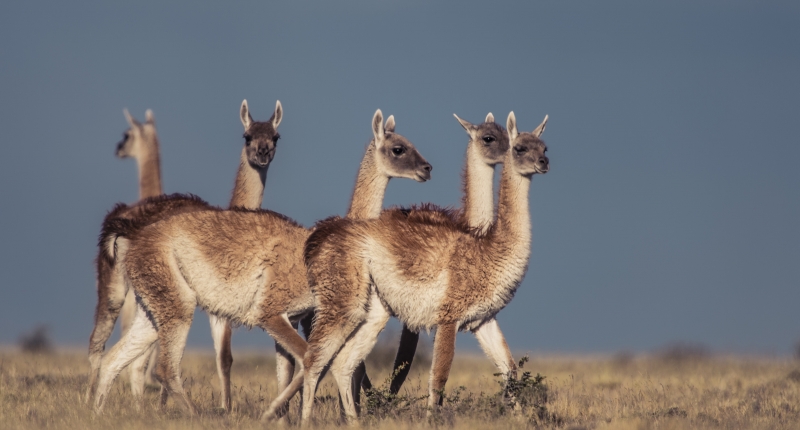Mange on the Range: a new SNAPP working group tackles the spreading of mange

For anyone who has been lucky enough to roam the magnificent region of Tierra del Fuego (the Chilean and Argentine Patagonia), it is clear that guanacos are an integral element of the landscape, as well as of traditional dishes. Guanacos, a wild relative of the alpaca and part of the camelid family, were historically hunted for leather, fiber, and meat, and have been listed as critically endangered in CITES since 1978. Although they may appear to be abundant, current estimates of their population size (600,000 - 1 million) are much smaller than their historic size of up to 30 million in the 1800s.
Vicuñas, a similar wild relative found in the Northern Andean region in Peru and Bolivia, are also key components of local ecosystems, food chains, and economies, as each kilogram of their wool is estimated to be worth over $350 USD. Listed as critically endangered in the 1960s due to over-hunting, vicuña numbers have been gradually recovering - until recently, when an outbreak of mange began threatening their populations. Mange, a global infectious skin disease caused by the Sarcoptes scabiei mite has now devastated guanaco and vicuña populations across Peru, Bolivia, Chile, and Argentina. The most extreme recorded outbreak is in the San Guillermo National Park in northeastern Argentina, where 90% of vicuñas and guanacos died of mange between 2016-2018.
Mange does not only threaten guanacos and vicuñas, but can also spread quickly to livestock and can therefore threaten communities that depend on livestock. The Science for Nature and People Partnership (SNAPP) working group Andean Camelid Disease has taken on the task of finding management strategies to control mange in order to promote the health of these wildlife species, associated ecosystems, threatened livestock, and human communities.
The team is led by wildlife veterinarian Chris Walzer from the Wildlife Conservation Society, as well as wildlife disease ecologist Paul Cross from USGS, and Mariana Montoya, the Country Director of Wildlife Conservation Society - Perú. The team is a conglomerate of 21 experts from interdisciplinary fields, 15 of whom are based in the range countries, including representatives of implementation partner institutions and local stakeholders to ensure that the concerns and experiences of frontline observers are heard and used to inform the team’s work.
In addition to mange, guanacos and vicuñas are threatened by climate change, habitat loss, pasture competition with livestock, and a lack of transparent regulations about the legal fiber trade. The team’s coordinated response will consider how we can mitigate all of these threats and prevent further loss of vicuña and guanaco populations.
As the team described in their project proposal, “mange is a welfare issue for managed South American Camelids (SAC) and decreases fiber yield and quality, directly impacting indigenous communities’ livelihoods, health, economic development, and possibly increasing demand from the illegal trade in fiber.” Most countries within the camelids’ range do not have current management plans in place and if legislation does exist, it often goes unfollowed due to limited technical and human resources. Additionally, the geomorphology and inaccessibility of the species’ ranges lead to ineffective control of mange.
This SNAPP team will systematically review, analyze, coordinate, and discuss 15 years worth of data sets, reports, and grey literature that have been produced by various organizations and countries. That work is crucial in order to accomplish their goals, which are to:
- promote science-based knowledge to overcome the myths regarding mange disease and management
- collate and compare mange severity, impact, and management data across the range
- identify potential common predictors of severe mange infestations
- develop a framework to facilitate holistic data sharing across the livestock-wildlife-human sectors
- inform and support central animal health agencies’ development of ecologically informed management plans that mitigate disease impacts
The team’s peer-reviewed journal articles, published datasets, policy recommendations for each affected country, and public outreach events are intended to lead to positive impacts on policies and practices and inform related research.
By collaborating with local community projects and organizations working on mange, this SNAPP team has the potential to save a local icon that the ecosystem and human communities depend on. In light of the COVID-19 pandemic, the team plans to meet virtually in September to initiate its next steps, and hopes to meet in-person later in 2021.
